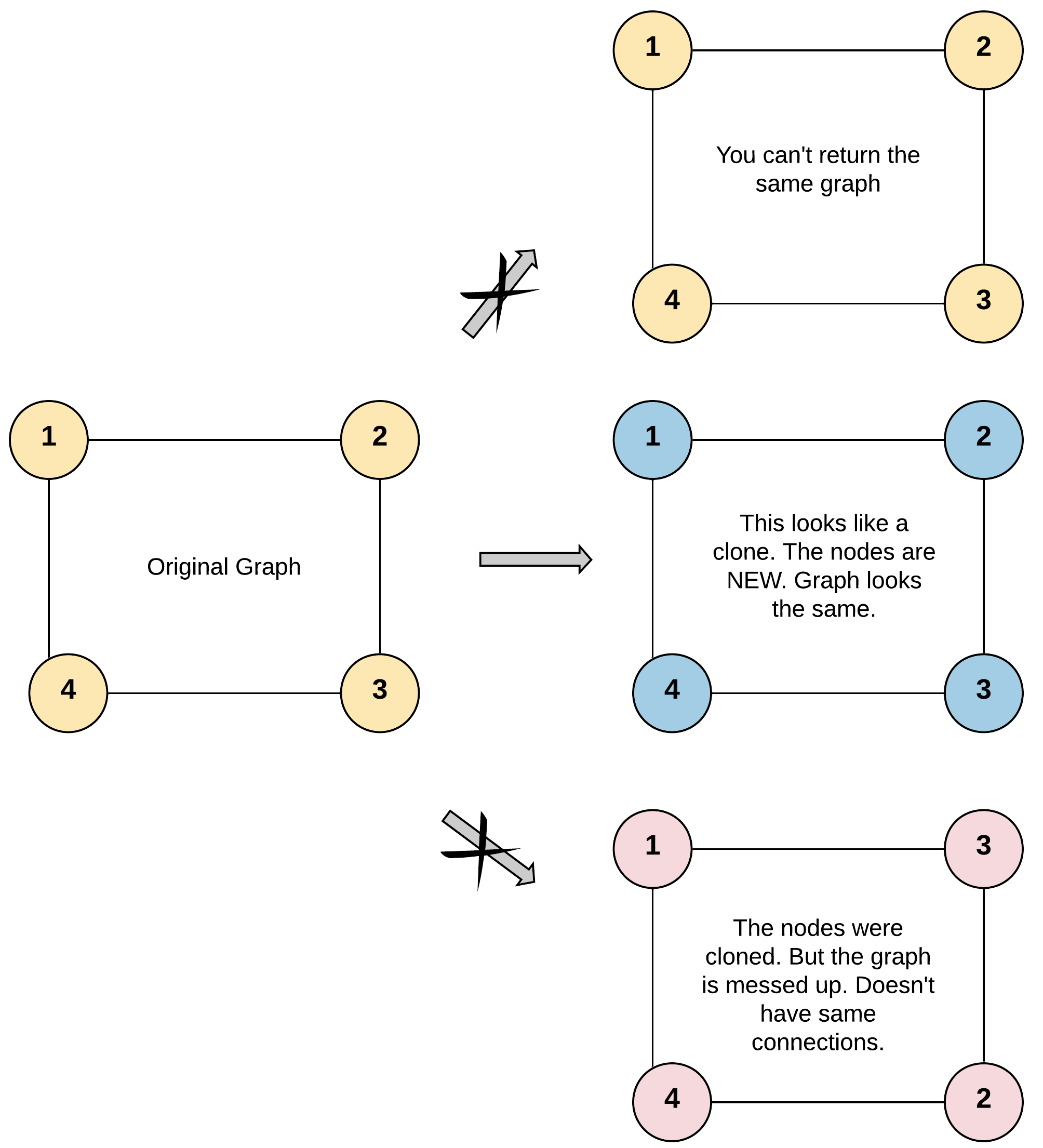Given a reference of a node in a connected undirected graph. Return a deep copy (clone) of the graph. Each node in the graph contains a value (int) and a list (List[Node]) of its neighbors. class Node { public int val; public List neighbors; }
Test case format: For simplicity, each node’s value is the same as the node’s index (1-indexed). For example, the first node with val == 1, the second node with val == 2, and so on. The graph is represented in the test case using an adjacency list. An adjacency list is a collection of unordered lists used to represent a finite graph. Each list describes the set of neighbors of a node in the graph. The given node will always be the first node with val = 1. You must return the copy of the given node as a reference to the cloned graph.
Example 1:

Input: adjList = [[2,4],[1,3],[2,4],[1,3]] Output: [[2,4],[1,3],[2,4],[1,3]] Explanation: There are 4 nodes in the graph. 1st node (val = 1)’s neighbors are 2nd node (val = 2) and 4th node (val = 4). 2nd node (val = 2)’s neighbors are 1st node (val = 1) and 3rd node (val = 3). 3rd node (val = 3)’s neighbors are 2nd node (val = 2) and 4th node (val = 4). 4th node (val = 4)’s neighbors are 1st node (val = 1) and 3rd node (val = 3). Example 2:

Input: adjList = [[]] Output: [[]] Explanation: Note that the input contains one empty list. The graph consists of only one node with val = 1 and it does not have any neighbors. Example 3: Input: adjList = [] Output: [] Explanation: This an empty graph, it does not have any nodes. Example 4:

Input: adjList = [[2],[1]] Output: [[2],[1]]
Constraints:
The number of nodes in the graph is in the range [0, 100].
1 <= Node.val <= 100
Node.val is unique for each node.
There are no repeated edges and no self-loops in the graph.
The Graph is connected and all nodes can be visited starting from the given node.
- code dfs recursion
class Solution:
def cloneGraph(self, node): # DFS recursively
if not node:
return node
m = {node: Node(node.val)}
self.dfs(node, m)
return m[node]
def dfs(self, node, m):
for neigh in node.neighbors:
if neigh not in m:
m[neigh] = Node(neigh.val)
self.dfs(neigh, m)
m[node].neighbors.append(m[neigh])
- code dfs while
class Solution:
def cloneGraph(self, node: 'Node') -> 'Node':
if not node: return node
visited = {node: Node(node.val)}
stack = [node]
while stack:
cur = stack.pop()
for nei in cur.neighbors:
if nei not in visited:
visited[nei] = Node(nei.val)
stack.append(nei)
visited[cur].neighbors.append(visited[nei])
return visited[node]
- code bfs
class Solution:
def cloneGraph(self, node): # BFS
if not node:
return node
m = {node: Node(node.val)}
deque = collections.deque([node])
while deque:
n = deque.popleft()
for neigh in n.neighbors:
if neigh not in m:
deque.append(neigh)
m[neigh] = Node(neigh.val)
m[n].neighbors.append(m[neigh])
return m[node]